Life in the lagoon

VulcanSpirit
Richard & Alison Brunstrom
Sun 29 Jun 2014 12:16
|
During our brief stop in New Caledonia in poor weather this year we did
nonetheless manage to do a bit of snorkelling with the camera. Marine life herre
is very good as fishing is prohibited in most of the lagoon. Here are just a few
of our better shots, aiming to show some of the variety on offer:
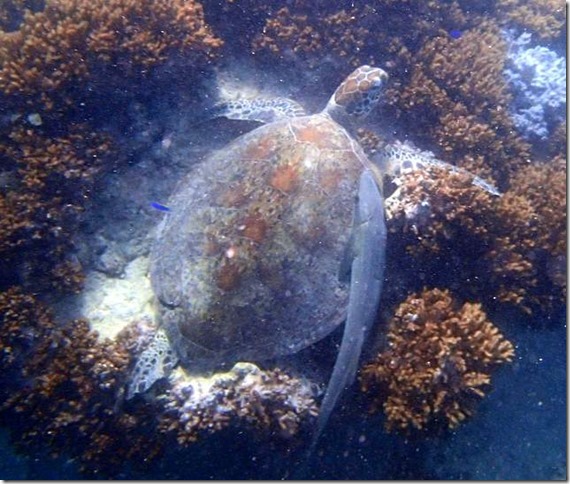 This is a turtle of course, about 1m long – but unusually on his back is a
remora, a fish with a laminated sucking disc on the top of the head used to
attach itself to sharks rays or less commonly, turtles. We often find them
attached to our hull when at anchor.
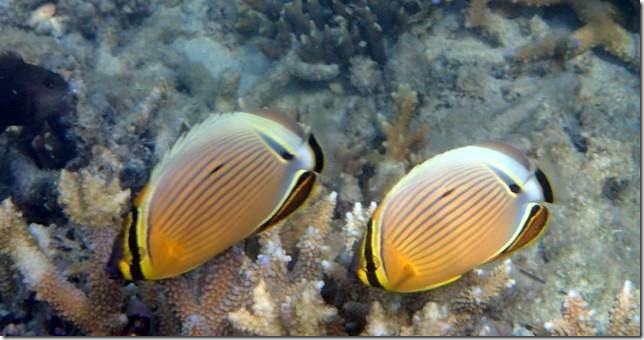 There are dozens of species of butterfly fish. They are my favourite fish
and I’ve spent hours trying to find and photograph them, with limited success.
The pair above are redfin butterfly fish, Chaetodon trifasciatus, about
15cm long. They feed exclusively on live coral polyps and so are an excellent
indicator of a healthy reef.
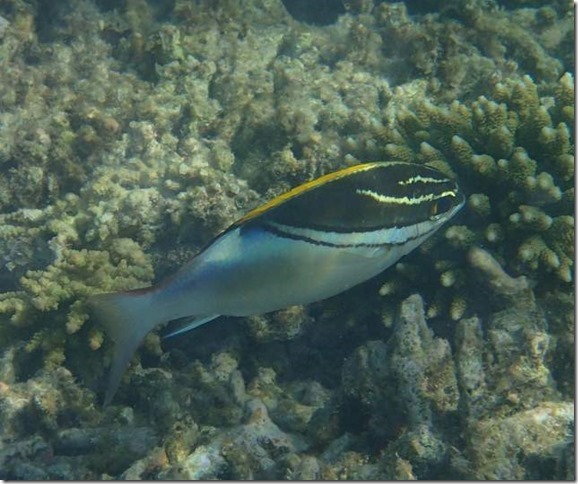 The reef abounds in curiously coloured and patterned fish. The one above is
a twoline spinecheek Scolopsis bilineatus, about 20cm long. It lives on
small benthic invertebrates. Below is a close-up of a coral showing the polyps
extended. Corals are colonial animals related to sea anemones and you can
clearly see here each polyps tentacles which are used to catch passing
micro-organisms:
.
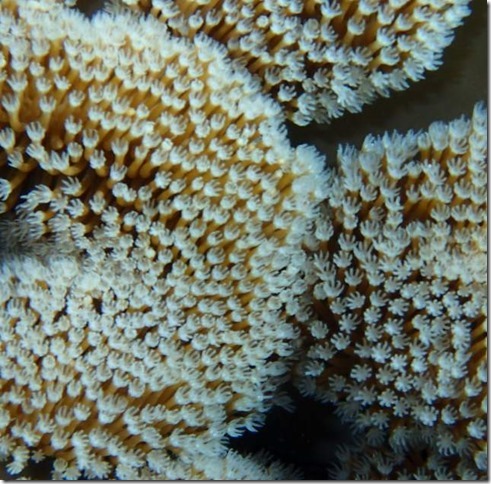 Also in the lagoon are sea snakes. Here is one ascending to the surface
(you can see the underside of the surface at the top of the picture) to take a
breath. These snakes which live on fish, particularly small eels living in
crevices, can be deadly to humans – but luckily their poison fangs are set so
far back in their mouths that it is almost impossible to get bitten:
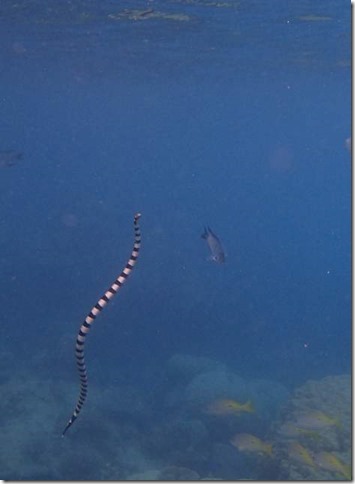 And here is a very large holothurian, a sea cucumber. These are
echinoderms, closely related to starfish and seaurchins. For reasons lost in the
depths of geological and evolutionary time echinoderms are pentaradially
symmetrical – their bodies are arranged on five axes. This is why most starfish
have five arms. Some echinoderms have secondarily disguised their origin by
evolving more arms, or entirely changing their body shape like this holothurian.
But if you look closely at a seaurchin you will see that its tube feet are
arranged in five rows, betraying its origin.Sadly, seacucumbers are a much
sought after delicacy in China which has led to massive overfishing. Anyway,
here it is, about 50-75cm long; the apparent spines are actually quite
soft:
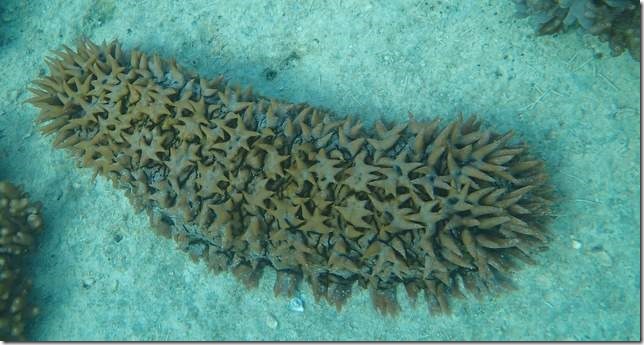 Next, a very common small reef fish, the scissortail sergeant Abudefduf
sexfasciatus. Feeds on zooplankton and benthic algae, and often aggregates in
large schools close to the surface:
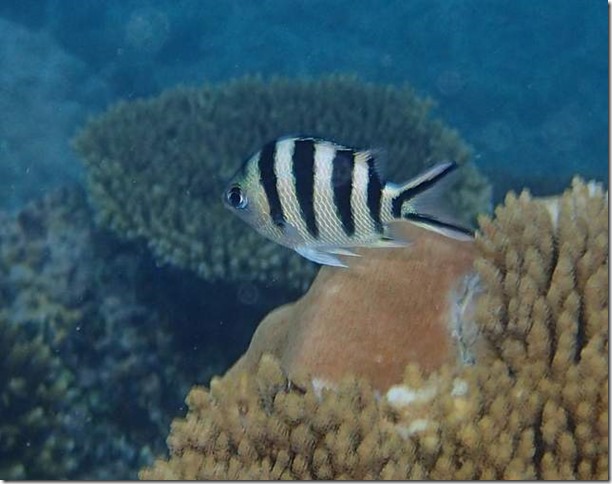 And lastly, a cloud of small damsel fish. There are loads of species many
looking very similar and I am not sure which these are. But they’re very pretty
and this is a typical view of them. If frightened they retreat into the arms of
the branched coral beneath them making it all but impossible for predators to
catch and eat them:
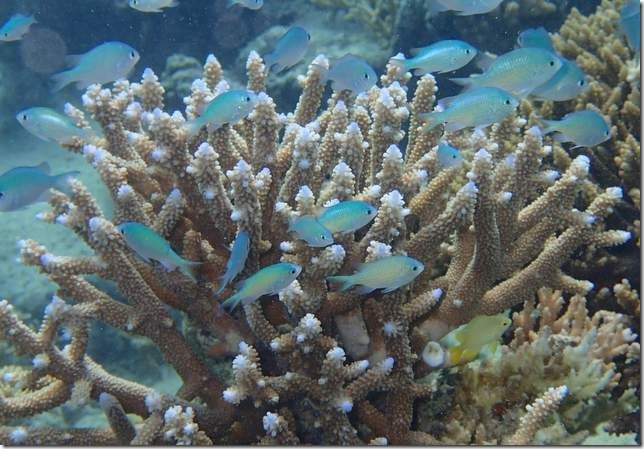 That’s enough for now. Suffice it to say that the NC lagoon teems with life
and the French authorities deserve much credit for protecting it as well as they
have. |